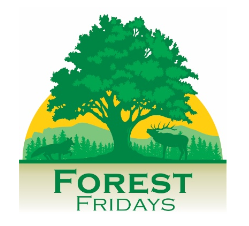National Arborist Appreciation Day
By John Schwartzer, Forest Fridays
June 16th is National Arborist Appreciation Day. What is an arborist? If you search for the definition of an arborist online, the first response is “a tree surgeon.”
Just as you wouldn’t go under the knife for high blood pressure or the flu, they are better defined as practitioners of arboriculture, i.e. the care and maintenance of trees.
Arborists were first recorded in the date palm and olive orchards of ancient Mesopotamia and Egypt. These trees had to be maintained to provide food for the hungry populations. The Old Testament even has a few lines about a “dresser[arborist] of sycomores[figs].” Orchards were planted across the globe in the centuries following the birth of agriculture. Trees were prolifically planted and maintained not just for food, but also beauty in Roman and Greek cultures. This trend continued into modern times.
Photo: A Greek amphora showing olive orchard 520 BC. CC BY-NC-SA 4.0. The Trustees of the British Museum.
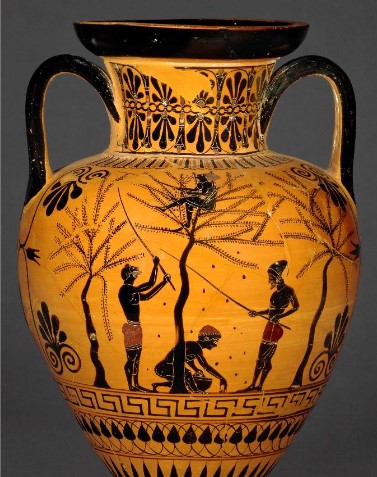
The oldest recorded European tree planted in the New World is a pear planted around 1630.
The term “tree surgeon” gained popularity in the early 1900s from an Englishman that lived in Ohio, John Davey. In 1880 Mr. Davey started the first commercial tree service in the US. Davey Tree Expert Company is still in business.
Photo: The ~400-year-old Endecott pear tree. Danvers, MA. October 2021. Jennifer L.
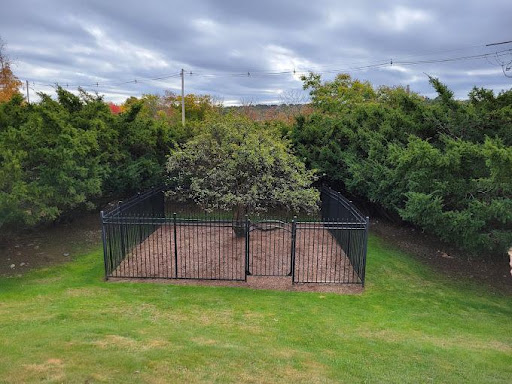
The International Society of Arboriculture lists 515 Certified and Master arborists in Pennsylvania. These pros have passed a certification exam and stay current with advances in arboriculture by earning continuing education credits. They are much more than tree surgeons. Certified arborists can be found on the ISA website.
Arboriculture applies science to maintain tree health. Topping trees isn’t arboriculture. A “topped” tree means that the tree was viciously pruned without regard to proper pruning techniques or the long-term health of the tree.
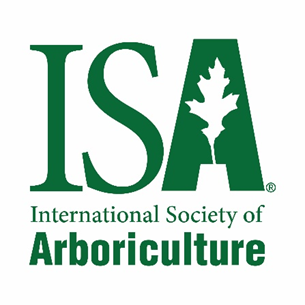
According to the International Society of Arboriculture proper pruning techniques include:
- Cleaning – removing dead, dying, diseased, weakly attached, and low-vigor branches from the crown of a tree.
- Raising – removing the lower branches from a tree to provide clearance for buildings, vehicles, pedestrians, and vistas.
- Reduction – reducing the size of a tree, often for utility line clearance. Reducing a tree’s height or spread is best accomplished by pruning back the leaders and branch terminals to secondary branches that are large enough to assume the terminal roles (at least one-third the diameter of the cut stem). Compared to topping, reduction helps maintain the tree’s form and structural integrity.
- Reducing – removing density of foliage at the crown periphery, thinning, is sometimes performed to increase wind or light penetration for aesthetic reasons and to promote interior foliage development.
Photo: Topped trees. University of Florida 2020. www.hort.ifas.ufl.edu
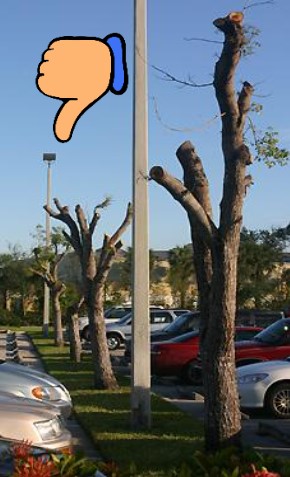
We appreciate arborists and the wonderful work that they do. The next time you see someone with pine tar under their fingernails and sawdust in their hair, take a moment to thank them for all they do.
Photo: Arborist. CC-BY-SA-4.0 Theblaynster
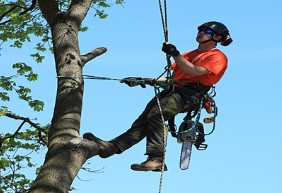
For More Information:
- Why Topping Hurts Trees www.treesaregood.org
- www.ISA-ARBOR.com The International Society of Arboriculture
- The Arborist: A brief history of arboriculture | Home and Outdoor Living | chronicleonline.com
- American Standard Bible, 1901. Amos 7:14.
- Topping – Maintenance – Landscape plants – Edward F. Gilman – UF/IFAS (ufl.edu)
- Endicott Pear Tree – Danvers, Massachusetts – Gastro Obscura (atlasobscura.com)
About the Author: John Schwartzer
John Schwartzer is the Department of Conservation and Natural Resources Bureau of Forestry woodland stewardship practices specialist. He is a 2008 graduate of The Pennsylvania State University with a B.S. in Forest Science. Before taking on his current role, he was a DCNR service forester for seven years educating and assisting forest landowners in southcentral Pennsylvania. His other previous occupations include research aide, a brief stint as an arborist, and he has been a forest technician for the US Forest Service, PA Game Commission, and DCNR Bureau of Forestry. John lives on a small hobby farm in Perry County PA with his wife Kellie and two sons. If he’s not reading a book, you can find him playing in his woodlot. John is an avid hunter, lackluster angler, wild food/foraging enthusiast, and hopeless gardener.
